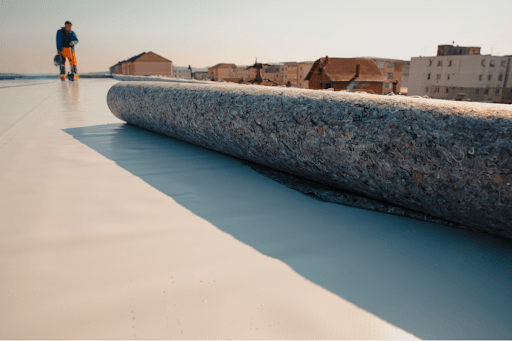5.0
152+Call
215-713-4178

What Are the Different Types of Roofing Systems? Which Is Best for My Home?
Homeowners looking to address concerns with their roofs have likely encountered the many different roof options and types of roofing material available to them. They each have different installation methods and, in turn, benefits for your home. Besides contacting your local roofing contractor, it’s good to know some important details about each type to help decide which roofing system is best for your home.
Fiberglass
GRP roofing or fiberglass is an excellent and common roof system characterized by durability and low maintenance levels. Fiberglass roofs have little to no gaps ensuring that your roof system will stand strong, and you won’t have to repair any faults or weak spots that other roofs might have. In addition, fiberglass roof shingles are also very flexible and can adapt to numerous roof shapes and sizes.
Metal
Metal roofs are energy efficient and require minimal maintenance. You can choose from aluminum, zinc, steel, copper, or tin, and you’ll rest assured you’ll have a roof that can last you 50-70 years with proper maintenance. Metal roofs are an environmentally friendly choice for your home and can help to reduce your energy bills by 10%. Metal is highly durable and not common to surfer cracks and punctures from heavy storms and wind damage that other roofs are more likely to experience.
EPDM
EPDM roofs are a durable synthetic rubber roofing membrane, usually installed with specially formulated tape, mechanically attached, or fully adhered. EPDM can last upwards of 50 years, and they allow you to attach waterproofing and UV reflective coatings every ten years to ensure you maximize the lifespan of your EPDM roof. EPDM roofs can be vulnerable to punctures and penetrations from tree branches, so be mindful of your environment before purchasing this roof.
PVC Systems
Polyvinyl chloride (PVC) is an efficient single-ply roofing system characterized by low oil and petroleum levels. PVC roofing is strong and stable and can be welded at the seams for a stronger fit. PVC has high resistance to UV rays, water leaks, and fire and has a high reputation in the roofing industry. PVC roofing lasts up to 30 years and is easy for roof repair specialists since it can be easily welded, which balances out that its price is a bit higher than other roofing materials.
Modified Bitumen
Modified bitumen systems are among the most trusted roofing products available to homeowners and are usually used in environments with difficult weather conditions and on low-slope roofs. Modified bitumen systems are either part of a two-layer system or multiple layer systems consisting of:
- Insulation
- Modified Base Sheets
- Modified Bitumen Membranes
- Adhesive
- Surfacing
Modified bitumen roofing can be applied in multiple ways and offers your home strong insulation benefits and superior waterproofing to most other roofing systems. Modified bitumen systems also provide an effective cost-lifespan ratio, are easy to install, offer high UV resistance, and are adaptable to multiple situations.
TPO
You’ve likely been looking at TPO roof systems if you’ve seen a bright white roof on a large facility. Thermoplastic polyolefin is a single-ply membrane roofing system used for commercial roofs. Usually found on flat roofs, TPO sheets cover a 10, 12, or 20-foot wide area and naturally reflect UV rays, despite it being a single flat layer. TPO roofs last about 15-20 years and allow for multiple insulation options, and are Class A fire-resistant.
Liquid PMMA
Polymethyl methacrylate is known in the industry for its rapid curing time and is one of the highest-rated liquid roofing systems in terms of durability. This liquid roofing system is applied with a roller to roofs and reinforced with a layer of polyester. PMMA resists chemicals and water, and its chemical bonds lead to easy repair, but it is known for its high labor costs due to how time-intensive the installation is.
Urethane Liquid Systems
Polyurethane liquid roofs are another highly durable liquid roofing material, and there are two types available for residential and commercial roofing contractors: aliphatic and aromatic. Aliphatic is usually used for those looking for a resistant coating that holds color and resists dirt and UV rays. Aromas typically cost less, but they tend to be less UV resistant and resistant to dirt and grime. Thus, aromatic systems are used as bases rather than the main external coating.
How Do I Know Which System Is Right for My Home?
With the multitude of available systems, it can be tough to differentiate which one works for your home. It’s a good idea to list the important features you want for your home’s roof and consider the climate and environment you’re living in. Does your roof take up large square footage? Do you live near large trees in an environment with heavy thunderstorms or natural disasters? Questions like these will help you determine which roofing system is best for your home.
A good roofing contractor can help identify what roofing system works for you. Contact Philadelphia Quality Roofing if you’re looking for roof installation or replacement in the Philadelphia area. Our roof experts can guide you to the system that ensures the protection of your home or facility.